
























By Juhi Varma
Pearland, Tx: More than 650 people gathered on Saturday, June 14, at the Sri Meenakshi Temple in Pearland for a one-day convention that brought together an impressive lineup of Hindu leaders—from a tech billionaire and a NASA scientist to a congressman.
In a world that seems disconnected from tradition, how can we raise young people to be confident, grounded leaders? The 2025 edition of the NextGen Hindu Youth Leadership Convention—back after its 2023 debut—set out to explore exactly that.
According to Dr. Dhamo S. Dhamotharan, chairman of NextGen, the goal was to bring in at least 600 participants, mostly youth. Not only did the event surpass that target, but an impressive 65% of attendees were young people.
“Our young people love Hinduism, but their interest in rituals is much less. There is more interest in making our Hindu temples evolve into Hindu universities,” Dr. Dhamotharan said during his opening remarks. “We all have the responsibility and duty to inspire and motivate our Hindu youth to take on leadership roles in our community…They value what we tell them about Hinduism, but we need to empower them.”
In addition to speeches and panels, the event featured interactive breakout sessions—designed not just for youth, but also for the parents who brought them.
“I think it’s really good that we have social participation here,” said Aarya Vyas, 16, a student at Elkins High School in Sugar Land. “We’re covering, like, a variety of topics. I think that would be a really interesting way to gain more perspective.”
With plenty of breaks, tea, coffee, and Indian food, the day moved quickly. It was hard to get bored — many stayed until the very end
“It’s incredible to see, because many times, people that are more experienced in life and older in life, they don’t respect or pour into the next generation,” said Manvel Mayor Dan Davis. “It’s that next generation that’s going to take care of us when we get older.”
“I think this is the novelty of this event, to prepare the next generation for the challenges and encourage them to take the leadership role,” said Sanjay Singhal, Sugar Land’s newly elected city councilor.
There were many impressive speakers, too many to fit into a single article. So, we’re breaking this up. This is part one—stay tuned next week for highlights from the rest of the speakers.

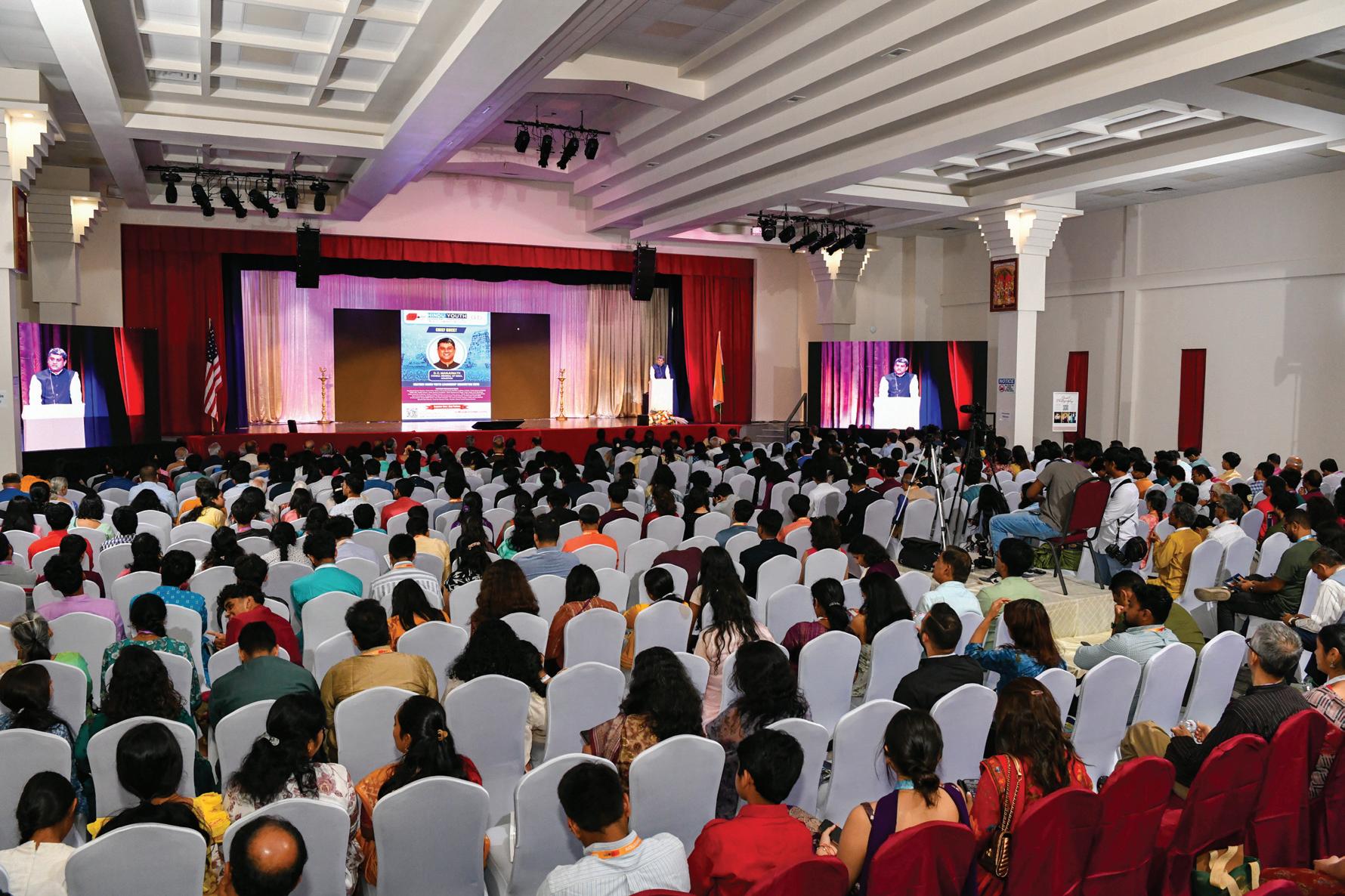
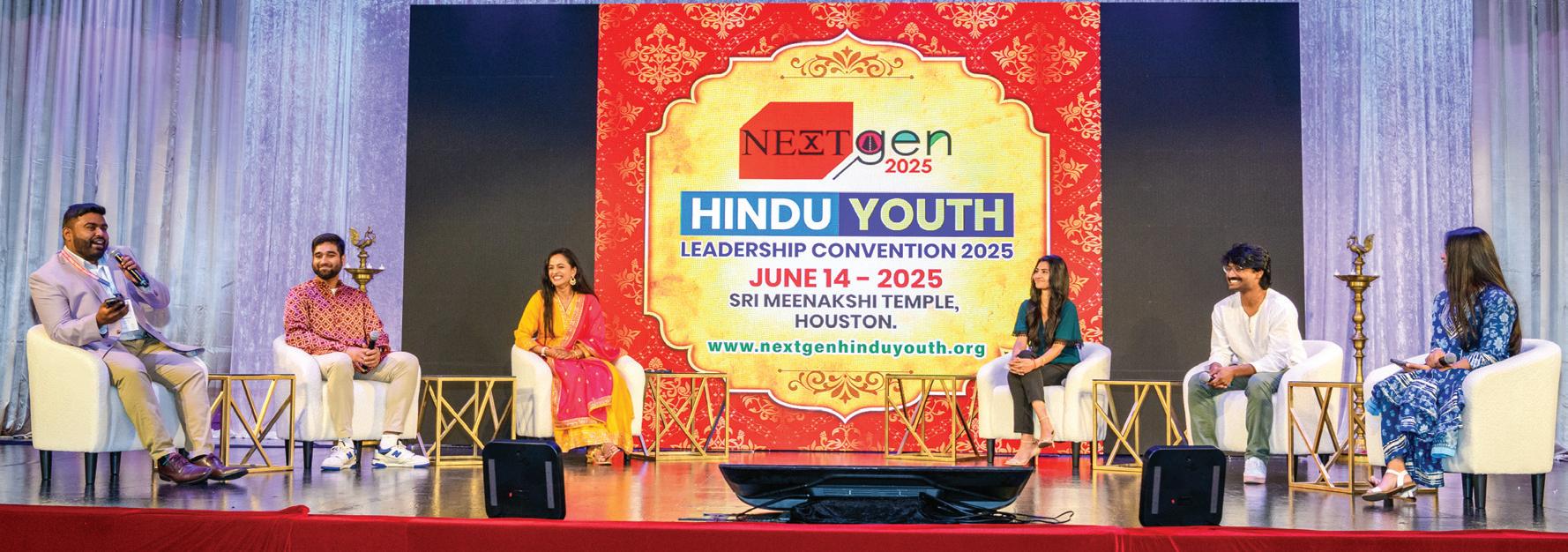

By hariPriya SundaramurThy
Pearland, Tx: On Saturday, June 14th, the Sri Meenakshi Temple in Houston became more than just a sacred site, it became the vibrant heart of a powerful movement. The 2025 NextGen Hindu Youth Leadership Convention brought together over 650 participants, including 450 youth, of which 350 are current studentseach arriving with a hunger to connect, learn, and lead.
Set on the beautiful grounds of the Sri Meenakshi Temple, the convention pulsed with spirituality, purpose, and connection. Attendees described the experience as “empowering,” “eye-opening,” “inspiring”, and “deeply grounding.” What made the event especially meaningful was the way it seamlessly blended leadership development with cultural belonging.
Esteemed speakers - including Sridhar Vembu (Founder of Zoho Corp.), Sri Gauranga Das (ISKCON), and Congressman Suhas Subramanyam - shared deeply personal stories about remaining rooted in Hindu values while navigating global stages of influence and impact. Youth didn’t just listen to panel discussions, they saw themselves reflected in them.
Throughout the day, workshops and breakout sessions addressed some real challenges and aspirations facing young Hindus today: how to lead with authenticity, how to navigate Hindu identity in a modern world, and how to give back with intention.
The convention clearly met its intended objectives. It showcased inspiring Hindu role models, nurtured leadership and entrepreneurial mindsets, and celebrated the Hindu way of life with pride and renewed confidence. IzzzΩΩΩΩt reinforced dharmic values, empowering youth to give back, stay rooted in their cultural heritage, and engage with the wider community.
But perhaps the most powerful takeaway was the sense of unity. From the organizing team to the volunteers and speakers, people from around the world came together, across time zones, experiences, and generations, to make the event a resounding success. That spirit of collaboration echoed through the day’s carefully curated agenda, the fluid transitions between sessions, and the warm, welcoming environment created by the NextGen team.
Participants left the convention already brainstorming service projects, planning future collaborations, and forming lasting friendships. Mentorship circles sparked meaningful intergenerational conversations, while networking activities transformed strangers into teammates and community-builders. More than anything, attendees walked away with a deep sense of belonging to the broader, evolving Hindu community.
FT Bend iSd, Tx: Dhruvi Kadakia, a student at Sartartia Middle School in Fort Bend ISD, has been selected to travel to Houston/Galveston to participate in a summer 2025 Lone Star Leadership Academy camp. Dhruvi’s selection was based on her outstanding academic success, demonstrated leadership ability, involvement in school and community activities, and a nomination from her teacher, Patty Kulow.
Dhruvi will join a delegation of outstanding students from across the state to develop leadership skills while learning about the great state of Texas and its leaders. She will visit significant sites in the Houston/Galveston area including the Astronaut Training Facility at NASA’s Johnson Space Center, San Jacinto Battleground State Historic Site, Lone Star Flight Museum, Houston Museum of Natural Science, Moody Gardens, and the Ocean Star Offshore Drilling Rig and Museum.
She will also tour Galveston Bay on board SEAGULL II with a marine biologist, learn about the Port of Houston from members of the U.S. Coast Guard, and work with a team to complete a space mission at the George Observatory, home to one of the largest public telescopes in the United States. Additionally, Dhruvi will learn about future career and internship opportunities through career speaker presentations at sites visited.
Texas educators facilitate Lone Star Leadership Academy camps including leadership groups where Dhruvi and the other participants will examine qualities of effective leaders, practice leadership skills, and discuss what they learn at sites visited. In addition, Dhruvi will have fun meeting other outstanding students and making new friends while adding to her resume of academic achievements, developing leadership skills, and bringing home a wealth of information to supplement what she is learning in school.
Education in Action, a non-profit organization, hosts Lone Star Leadership Academy camps to empower young people to be informed and active leaders in their communities.
Outstanding Texas students are invited to participate in Lone Star Leadership Academy camps in Dallas/Fort Worth, Austin/San Antonio, and Houston/Galveston. Participants must be in the 3rd-8th grade, maintain an 85 or higher average, demonstrate leadership ability, be involved in community or school activities, and receive an educator recommendation.
Educators are invited to nominate their outstanding 3rd-8th grade students for Lone Star Leadership Academy camps online at www.educationinaction.org/nominate. For more information call 817-562-4957 or visit www.educationinaction.org or www.facebook.com/educationinaction.
Introduction of Dhruvi Kadakia
Dhruvi Sanatan Kadakia lives in Sugarland, Texas! She envisions to uplift and have a contribution to her communities’ success and diversity.
Recently, she was nominated by her 8th Grade science teacher to attend the Lone Star Leadership Academy Summer Camp from Sartartia Middle School. She would like to state the acts of service she did to contribute to her school environment that ended up allowing her to get nominated for such a prestigious camp.
Key Accomplishments
Dhruvi aided and taught a Foreign EB (Emergent Bilingual) student in his educational pursuits for 9 months while collaborating with different teachers to form a plan for his success during her 8th grade year.
In her 7th Grade year, she was awarded Jag of the Year (Best student of the year) due to nominees from her teachers and her assistance in teaching and improving grades towards students in her classes.
She was a nominee for Jag of the Year 8th Grade and World Class Jag 8th Grade (Best Student in all three years of his/her middle school timeline at Sartartia Middle School).
She was nominated by her principal to attend the Principal’s institute with N2Learning which includes nearly 60 newly appointed principals from across Texas.
She achieved 2nd chair in her region choir out of around 85 students.
She was awarded with Presidential awards for 5th grade and 8th grade.
She volunteered for around 30-33 hours involving the Houston Food Bank, her local library, and the Bayou Art Festival (2 timer) during 8th grade.
She is a member of NEHS (National Elementary Honor Society) and NJHS (National Junior Honor Society).
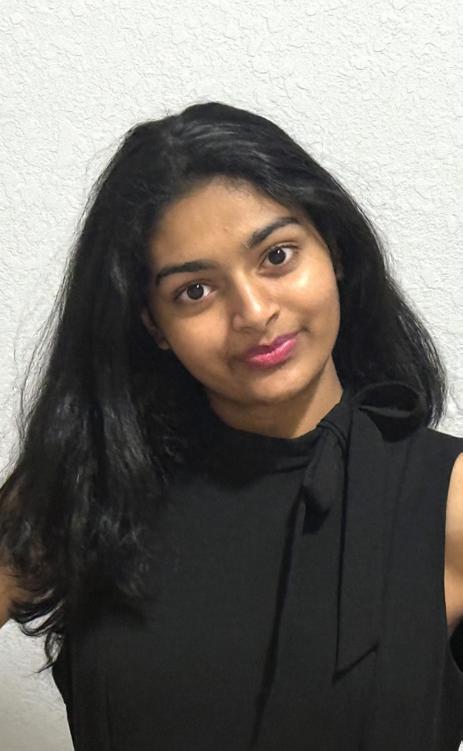
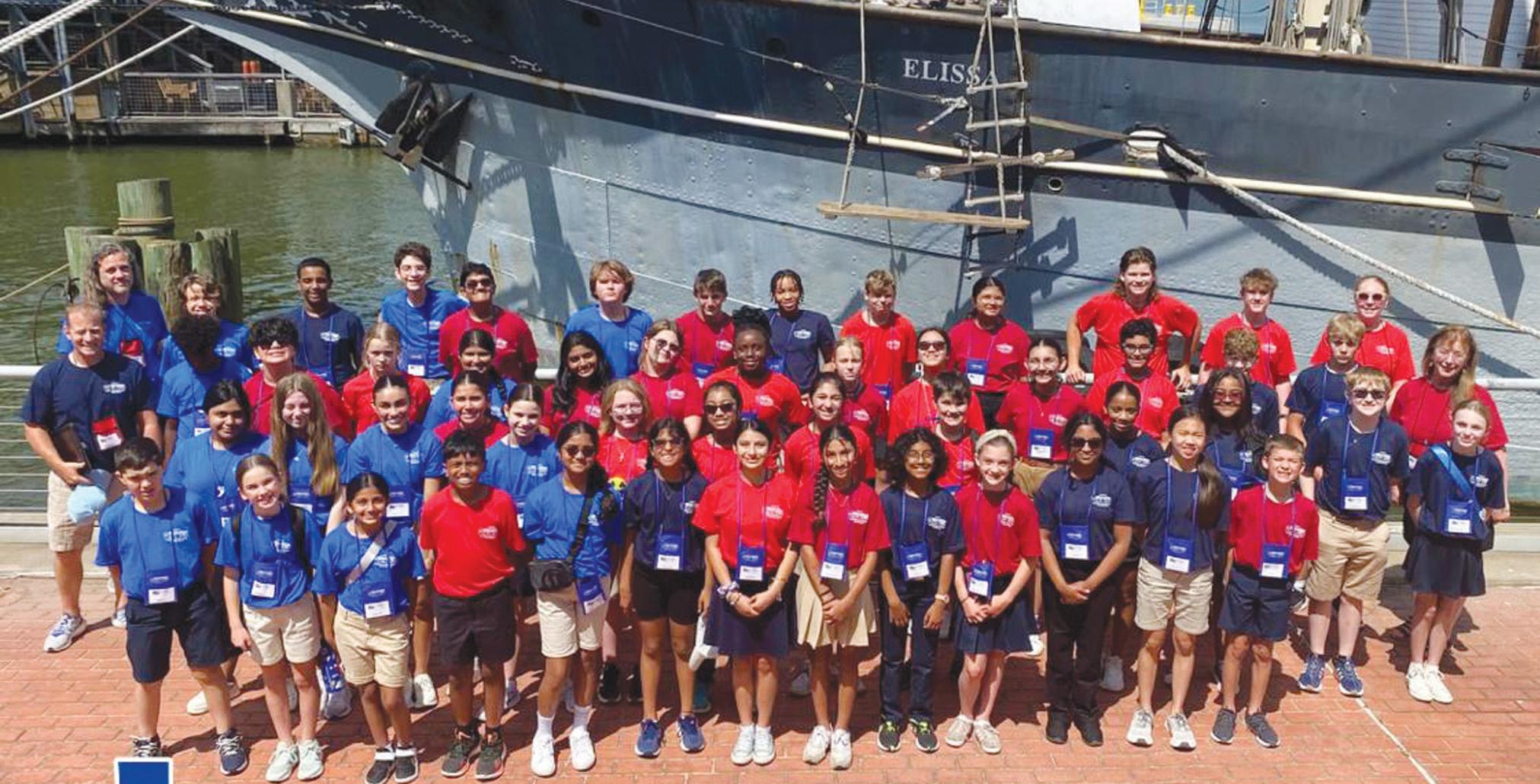
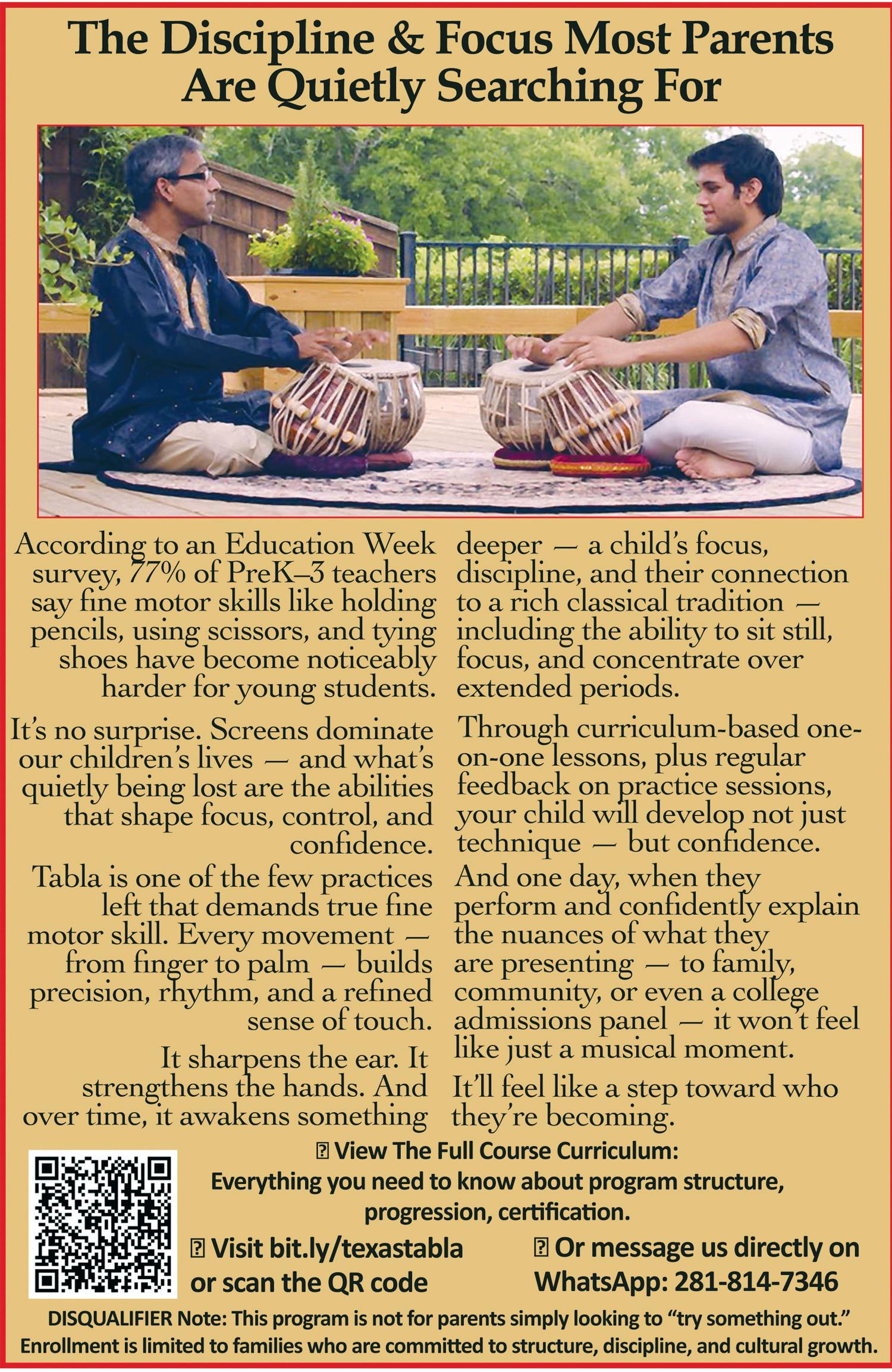

houSTon: The Indian American PAC of Greater Houston hosted a special reception honoring U.S. Representative Suhas Subramanyam, a native Houstonian currently serving Virginia’s 10th Congressional District. The event took place Friday evening, June 14, at the private office and warehouse of Rick Pal, a Houston-based entrepreneur and philanthropist.
Approximately 35 guests— including professionals, local leaders, and political advocates— attended the event, which offered an opportunity for direct engagement with the Congressman in an
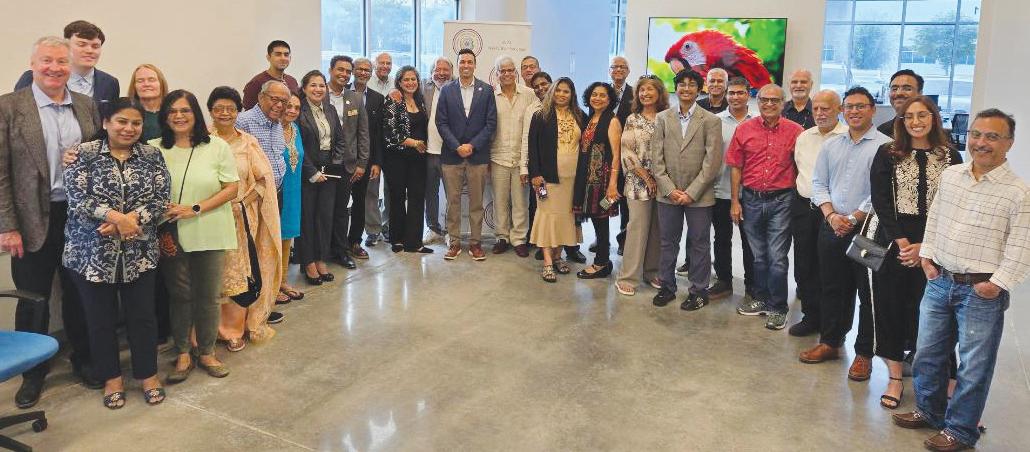
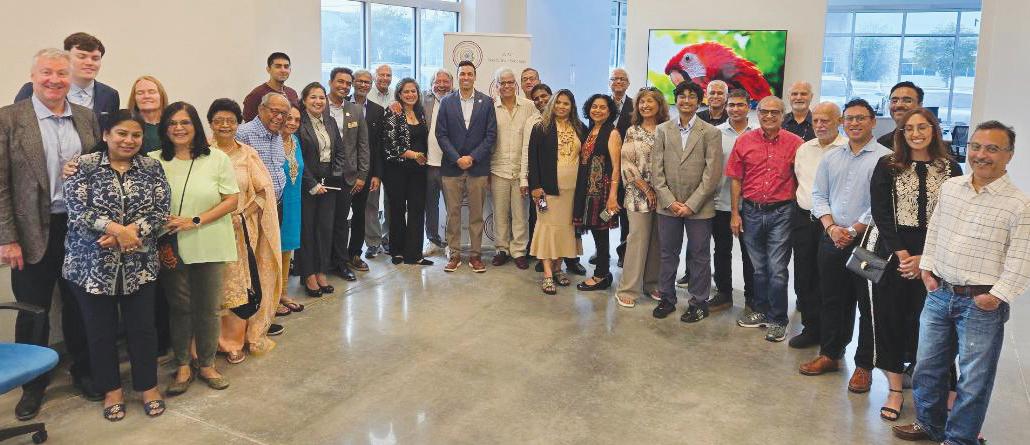
informal, welcoming setting. Also in attendance was Mike Doyle, Chair of the Harris County Democratic Party, The evening featured refreshments and conversation, with a focus on civic dialogue and community priorities.
Rick Pal, who graciously hosted the reception, welcomed attendees and opened the program by highlighting Congressman Subramanyam’s impactful leadership and bipartisan approach. “It’s an honor to host Congressman Subramanyam here in Houston,” said Rick Pal. “His values reflect the kind of leadership we need—principled,
inclusive, and focused on real solutions. ”
Dr. Purushottam Sahoo, President of the Indian American PAC, thanked guests for their participation and reiterated the organization’s mission to promote political awareness and advocacy among Indian Americans. He noted the growing engagement of young volunteers, several of whom supported event logistics and outreach.
Congressman Subramanyam reflected on his Houston upbringing and his journey into public service, including his role as a White

House advisor during the Obama administration and his current work in Congress. He spoke about bridging partisan divides, protecting youth online, and expanding access to mental health care. “I carry Houston with me every day in Congress,” said Congressman Subramanyam. “This city taught me the values of hard work, empathy, and service—and those are the values I bring to every policy decision. I’m honored to return home and connect with a community that helped shape who I am.”
The evening concluded with an engaging Q&A session, photo op-
portunities, and a private dinner with Congressman Subramanyam and key Indian American PAC supporters and community leaders.
About the Indian American PAC
Founded, in 1996, the Indian American political action committee ( Indian American PAC) Is a nonprofit, non-partisan organization, dedicated to building political awareness and advocacy within the Indian American Community..Through events, forums and public policy




By BhagyaShree VaSanT deo
riChmond, Tx: My journey into the world of pranayama was so powerful that it inspired me to go deeper. This is the story of that ten-day journey into the art of meditation and the practice of silence at the Vipasāna meditation center in the quiet, remote town of Kaufman near Dallas. The campus is spacious and pleasant, filled with beautiful, eye-catching roses, both white and orange-red, that beautify the large pots scattered around.
This art of meditation was first brought to India by Gautam Buddha 2,500 years ago, but its practice faded over time. It was revived when Satyanarayan Goenkaji learned it in Burma from Sayaji U Ba Khin and brought it back to India in 1969, eventually spreading it worldwide.
Upon arriving, I joined a diverse group—American, Chinese, Tibetan, and Indian—all there to learn. I was assigned to a simple, clean dorm room for my ten-day stay, which included a bed, a small rack for clothes, and a few closets. The core of the experience was immediately made clear: every student must observe “Noble Silence” for the first nine days. We could not speak to or communicate with any fellow members. All necessary instructions were posted on the walls, and for the first nine days,
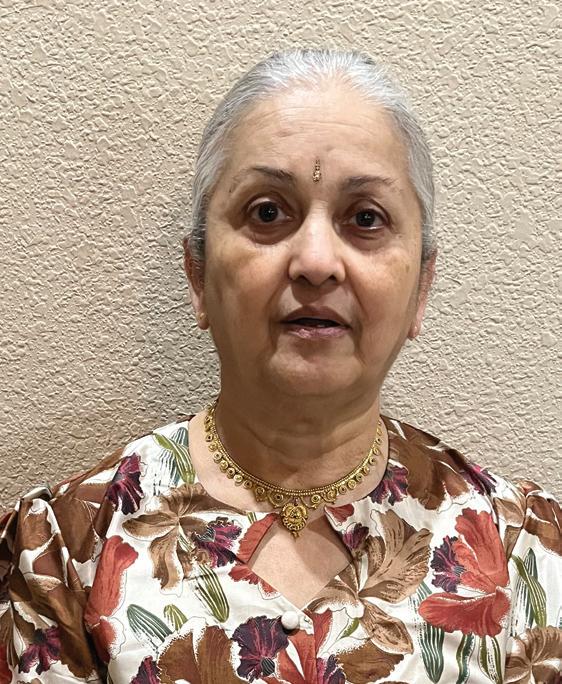
one can only speak with the teachers. It is very, very difficult to be completely silent, and I learned that many people, especially from an Indian background, have a hard time with this and may not even attempt the course.
Our days were structured around meditation in a separate, large hall, with curtains drawn to ensure focus. The day’s activities were announced by the ringing of a “Gong,” a thin, round metal bell that called us to wake up, eat, and meditate. Each evening, we would watch a video lecture from Goenkaji. He explained that the mind is wild and that our job is to tame and soften it. When the mind complains, “Oh! I cannot meditate at all,” we must be the ones to console it and guide it back to a happy state.
Goenkaji’s teachings were filled with powerful examples to

help us understand life’s deepest truths. He taught us about impermanence, explaining that our lives are like waves in an ocean— constantly forming and disappearing. He compared our actions, or Karma, to drawing lines: a line drawn on water vanishes instantly, a line on sand lasts for a day, but a line carved in rock with a chisel remains for many years. Our mental impressions, or Sanskar, are the same.
He told beautiful stories to illustrate his points. One was about a blind boy who had a fever. His friend begged for him that day and was given kheer (a rice pudding). When he told his blind friend the kheer was “white,” the friend didn’t understand. The other boy tried to explain by showing him a white bird, but when the blind boy touched its crooked body, he declared, “Your kheer is very
crooked! I don’t want it!”. From this, a muhavare (idiom) is born, showing how words can have different meanings when experienced differently.
Another story was about a poor man who won the lottery and bought a large mansion. He saw his friends’ well-furnished homes and felt a “thirst” for more. He bought a washing machine, a refrigerator, a TV, and a car. This thirst of shopping, Goenkaji explained, is never-ending.
Life at the center was simple and disciplined. The food was wholesome, with breakfast served after 6 am, featuring cereals, oatmeal, fruit, and tea. For lunch, we had hot soup, boiled vegetables, basmati rice, and fresh salad. In moments of rest, I would sit on the cement benches placed around the campus and watch the sunrise and sunset. The beauty was divine,
filled with the sweet chirping of birds.
On the last day, the “Holy Friendship Day,” the rule of silence was lifted, and an atmosphere of joy and fun filled the center. When I returned, my husband, Vasant was away for work in South Carolina, but he had left a beautiful letter and a vase of white and yellow roses for me on the dining table. I was so content and happy.
After facing the small hardships of the course, I learned a profound lesson, one that Goenkaji repeated on our final day as he wished “Bhavatu Sabba Mangal” (May all beings be happy) upon us. The lesson was simple but transformative: “Look at life from a positive point of view”.
Dhamma Siri Vipassana Meditation Center is located in Kaufman County, Texas, 972-962-8858







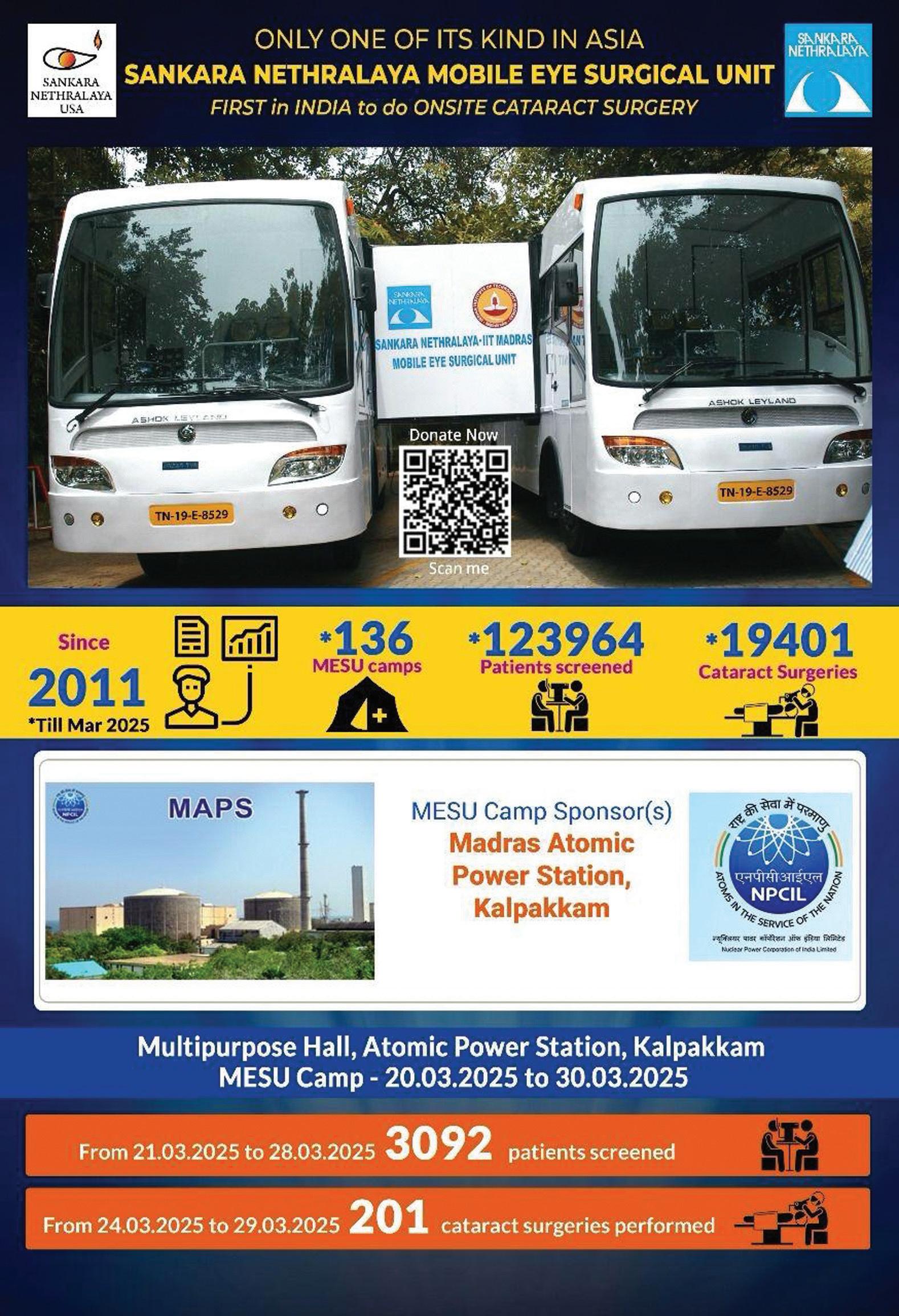

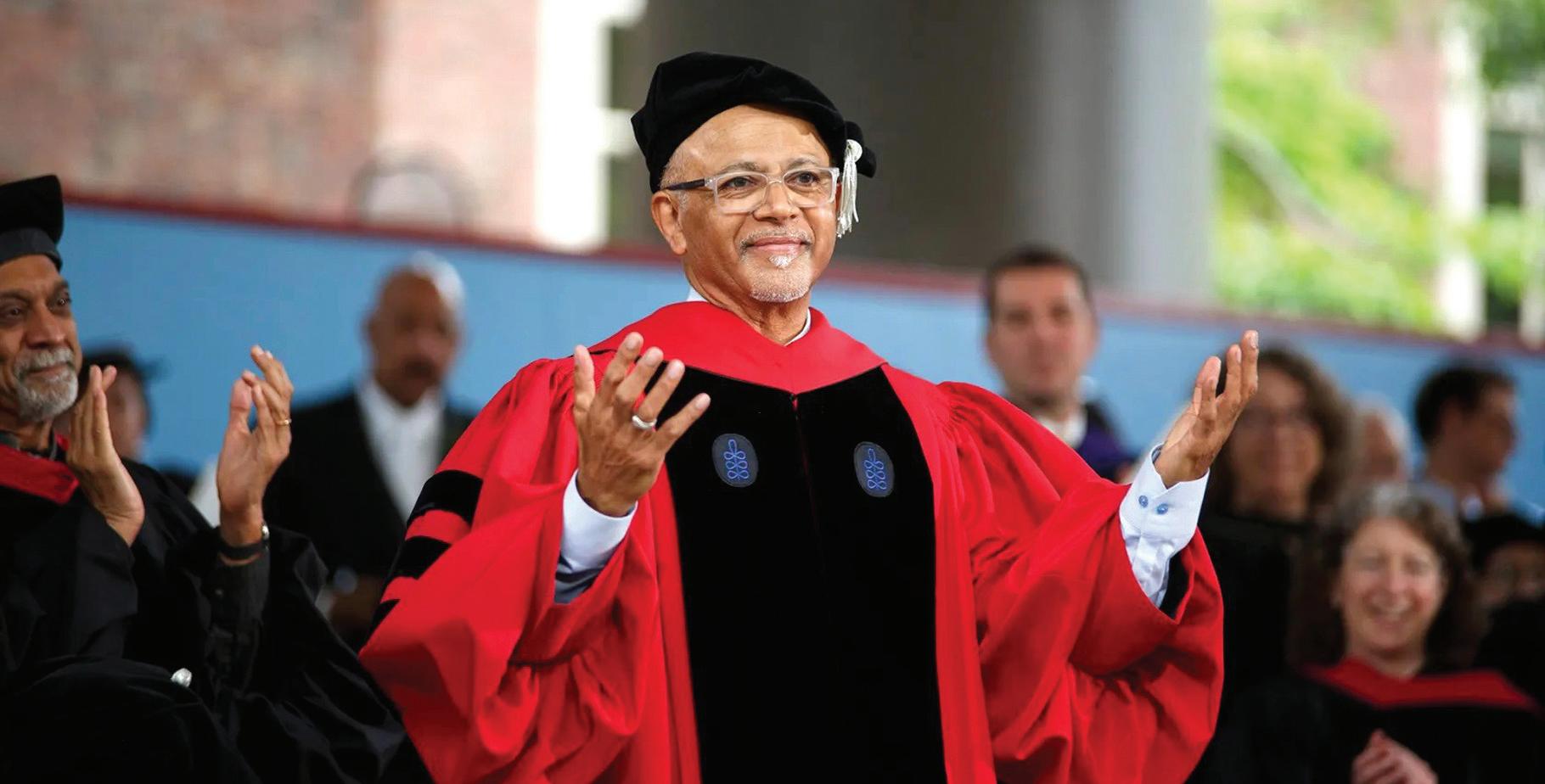
CamBridge, ma: In delivering the commencement speech at Harvard University, Abraham Verghese, physician and author of Indian-origin, proceeded to dissect MAGA-infused USA with the precision of a surgeon, although he is an infectious disease specialist.
“When legal immigrants and others who are lawfully in this country including so many of your international students worry about being wrongly detained and even deported, perhaps it’s fitting that you hear from an immigrant like me,” Dr Verghese told the graduating class, recalling a journey that brought him to America from Ethiopia, where he was born, via India, from where his parents hailed and from where he obtained his MBBS (from Madras Medical College). He recalled that both countries went through authoritarian rule, and the journey had led him to an appreciation of American values that were now under siege.
largely anti-Trump assembly that a cascade of draconian government measures had already led to uncertainty, pain, and suffering in America and across the globe—and more has been threatened.
Author of acclaimed novels going back to his 1994 debut with My Own Country: A Doctor’s Story, about his experience with the onset of AIDS in America, Verghese said a part of what makes America great is that “it allows an immigrant like me to blossom here, just as generations of other immigrants--and their children--have flourished and contributed in every walk of life, working to keep America great.”
Without once mentioning the US President’s name or MAGA, Abraham told the
Government of India
The new grads tittered at the many subtle digs Verghese took at the White House occupant, including referring to “the trait of reading fiction in some of the best physicians and leaders I have met, including your President, I mean your university’s President...And if you don’t read fiction, my considered medical opinion is that a part of your brain responsible for active imagination atrophies.”
Credit: Times of India


: Maruti has cut near-term production targets for its maiden electric vehicle e-Vitara by two-thirds because of rare earths shortages, a document showed, in the latest sign of disruption to the auto
India’s top carmaker, which said on Monday it had not seen any impact yet from the supply crisis, now plans to make about 8,200 e-Vitaras between April and September, versus an original goal of


seeing supplies easing as they secure licences from Beijing, India is still waiting for China’s approval amid fears of production stoppages.
Launched amid much fanfare at India’s car show in January, the e-Vitara is crucial to Maruti’s EV push in the country, marking its entry in a segment that Prime Minister Narendra Modi’s government wants to grow to 30% of all car sales by 2030 from about 2.5% last year.
The setback could also hurt parent Suzuki Motor for which India is the biggest market by revenue and a global production hub for EVs. The bulk of the made-in-India e-Vitaras are earmarked for export by Suzuki to its major markets like Europe and Japan by summer 2025.
The rare earths crisis comes as Maruti is already grappling to recover market share lost to Tata Motors and Mahindra & Mahindra’s feature-rich SUVs. These companies also lead India’s EV sales. Maruti’s share of India’s passenger vehicle market is down to 41% from a recent peak of about 51% in March 2020.
Suzuki has trimmed its sales target for India to 2.5 million vehicles by March 2031 from 3 million previously, and scaled back its lineup of EV launches to just four, instead of the six planned before, as competition in the South Asian nation intensifies.
Credit: Reuters
It cited “supply constraints” in rare earth materials that are vital in making magnets and other components across a range of Maruti still plans to meet its output target of 67,000 EVs for the year ending March 2026 by ramping up production inthe global auto industry, with companies warning of severe supply chain disruptions. While some companies and Japan are UPCOMING eve NT S
SUNDAY, JULY 13, 10:30AM - 1PM GITA CHANTING
Aarti followed by Bhandara
MONDAYS, JULY 14, 21, 28 & AUGUST 4
SHIv PUJA FRIDAY, AUGUST 15 JANAM ASHTAMI Sponsored by Raj & Jugal Malani S, AUGUST 26, 6:30PM-8PM GANeSH CHATURTHI
MON, AUG 18 - SUN, AUG 24 SHRIMAD BHAGAWAT KATHAA
SUNDAY, SePT 28, 9:30AM-10:30AM BHAJANS 11AM-2PM MATA DI CHOWKI
7 DAYS OF Maha Bhagvat Puran Prayers Led by Mohini Vashist





STanFord, Ca: A bronze bust of Srinivasa Ramanujan, one of India’s most revered mathematicians, was unveiled May 28 on the third floor of the Stanford Department of Mathematics. The installation was made possible through a donation by Ramji Raghavan, founder of Agastya International Foundation, and was hosted by Agastya USA and Indiaspora.
The ceremony featured tributes from Stanford mathematics professors, who highlighted Ramanujan’s pioneering work. Ramanujan, who died in 1920 at the age of 32, had no formal training in pure mathematics. Nonetheless, he made landmark contributions to mathematical analysis, number theory, infinite series, and continued fractions—solving problems previously deemed unsolvable.
Agastya International Foundation is a Bangalorebased nonprofit whose mission is “to spark curiosity, nurture creativity and instill confidence” among economically disadvantaged children and teachers across India.
Stanford Math Department Chair András Vasy, Robert Grimmett Professor in Mathematics, expressed gratitude. “We are most grateful that we received this sculpture,” he said. “It is a truly beautiful sculpture that will be looked upon by everyone who visits our department. Ramanujan came up with very original ideas and I think this is great to have this spirit in our department for many years to come.”
Prof. Kannan Soundararajan, Anne T. and Robert M. Bass Professor at Stanford, highlighted Ramanujan’s enduring impact. “I spoke about his work on quadratic forms, what led to his discovery of the Ramanujan tau function, which led him to a very influential set of conjectures called the Ramanujan Conjectures,” he said. “These have played a central role in mathematics for more than 100 years.”
“Algorithms are particularly relevant,” Soundararajan said when asked about Ramanujan’s relevance in the AI era. “His work is very relevant to cryptography, at least in public key cryptography, that the fastest algorithms to break those crypto systems would rely on properties of these smooth numbers.”
Prof. Brian Conrad of Stanford noted the lasting impact of Ramanujan’s work. “Many things in modern technology rely on mathematics,” he said. “It’s also the case that many advances depend upon ideas that were developed decades or even centuries before their utility could be understood.”
Prof. Tadashi Tokieda of Stanford, who played a key role in the installation, said, “Ramanujan is very familiar to all of us in the mathematical community. He found many facts and phenomena which were very seminal in the further development of the 20th-century mathematics.”
“Despite the tragedy and difficulties he faced, he managed to do so much,” Tokieda said. “And that is what inspires us, because he was a very exceptional human who could do so much.”
MR Rangaswami, founder of Indiaspora, who helped host the event, emphasized the significance of the event. “We are honored that today Stanford accepted a bust of Ramanujan in the Math department,” he said. “Our role is to bring his contributions to the attention of the diaspora and then also the next generation.”
Credit: Indica

(From left)
Prof. Brian Conrad, Stanford Math Department Chair András Vasy, Prof. Kannan Soundararajan and Ramji Raghavan, founder of Agastya International Foundation.
Photo: indica
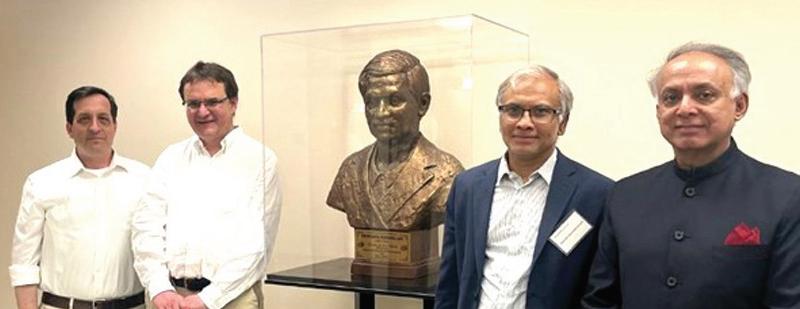

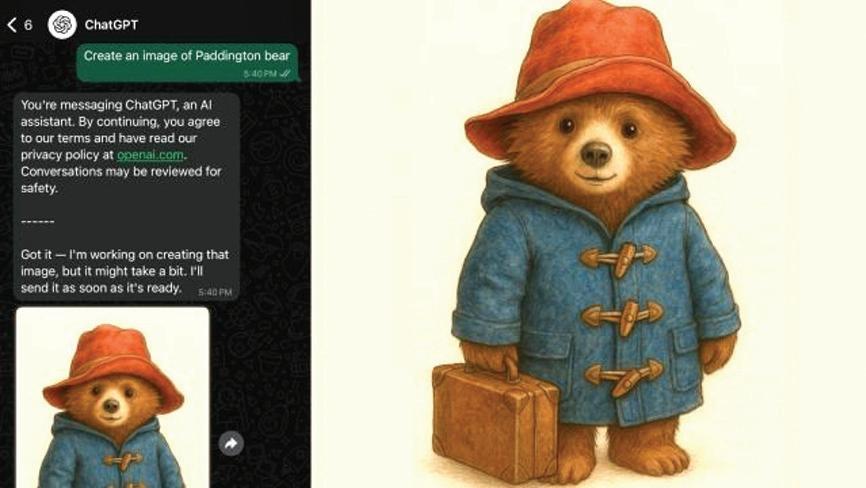
We asked ChatGPT on WhatsApp to create an image of Paddington. The chatbot created an image in less than two minutes.
OpenAI has brought ChatGPT image generation capabilities to the world’s most popular instant messaging application – WhatsApp. Until now, the feature was only available to users through ChatGPT web and mobile apps. With the feature coming to WhatsApp, it will now allow more users to amplify their creativity. The feature is free to use and has been in-
troduced in regions where ChatGPT is available on WhatsApp.
With the latest development, users can now create or edit images using the messaging application. For free users, ChatGPT allows one image at a time. For instance, after creating an image, it informs the user to wait for about 24 hours to create another image. We tried using the image generator on WhatsApp, and it showed the output in just two minutes.
Credit: Times of India
ChatGPT’s image generator is now on WhatsApp, allowing users to create AI images by chatting with the AI chatbot.
How to use the ChatGPT image generator on WhatsApp?
��To use ChatGPT on WhatsApp, one is required to save +1 (800) 242-8478 on their smartphone. Once saved, users can simply go on WhatsApp and begin conversations by simply saying ‘Hi’.
��Later, ChatGPT will ask users to link their account, for which they are required to follow prompts, and users will be directed to a secure login page.
��After link ing, one can start generating images The bot will respond to text prompts in a matter of minutes. One can try prompts like – “Create a surreal image of a sunny valley.”
We tried linking the ChatGPT account with WhatsApp; however, the chatbot was unable to do so. It seems OpenAI is still working on linking OpenAI accounts of users to their WhatsApp, and users can expect an update soon.
In December last year, OpenAI introduced ChatGPT on WhatsApp and fixed landline phones where initially users were allowed to talk to the chatbot for up to 15 minutes a month.
The company had said that talking to ChatGPT on the phone line did not require an additional subscription or even an account. Users could ask personal queries, and ChatGPT could also teach them to learn about new phrases in different languages. It essentially offers a natural language interface for users.
Other than image generation, WhatsApp users can summon ChatGPT for an assortment of tasks. From instant recipes to proofreading or assistance with writing, ChatGPT on WhatsApp can be an incredible tool to boost productivity.
Besides, users can also upload images to get a description of the visuals. It can also help users draft instant mails, from job applications and thank you notes to writing captions for social media; the chatbot can act as your AI assistant on the go.


Place a number in the empty boxes in such a way that each row across, each column down and each 9-box square contains all of the numbers from one to nine.
Send us the correct answer before June 17, 2025. Email us at indoamericannews@yahoo.com. Please send us your solved Sudoku for your name to be published.


Kumud Athavale, Krishna R. Vuddagiri, Sanchali Basu, Prabha Barvalia, Ramana Vadrevu, Yudhveer Bagga, Jawahar Khandheria, Arup Gupta, Mohit Mittal, Naveen Garg, Taranjit Singh, Pravina Kadakia, Tia Arora, Ramesh Ratneshvar


